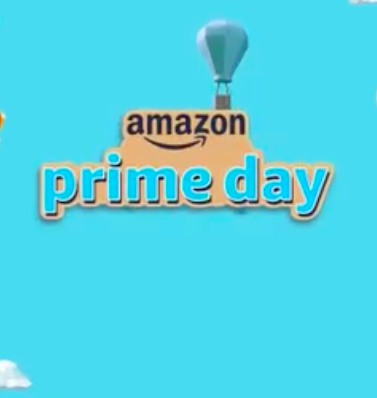As Amazon’s CTO since 2005, Werner Vogels has observed macro trends around the technology industry, giving him a unique perspective to distinguish substantive progress from mere fads. He recently published his views on what he sees in store in 2022 for cloud technology and the technology world in general.
This includes five core predictions, regarding the growth of artificial intelligence (AI), the abundance of data, the power of machine learning (ML), architecting for sustainability, and the full reach of connectivity via the internet, backed by cloud-based resources. This analysis provides takeaways for startups in India and where they might seek to create value in the next year.
Let’s dive into each of these anticipated developments and their potential impact on the world of startups.
1. AI-SUPPORTED SOFTWARE DEVELOPMENT TAKES HOLD
One of the key predictions is the exciting AI advancements that are just starting to impact the world of developers and running software at scale.
A developer might soon leverage ML and AI capabilities to extend far beyond their own immediate experience and knowledge, magnifying their impact and ability to deliver new features and capabilities to their core business products.
For startups, the impact of this could be massive. Imagine accelerating application development via code generation tools, inspecting the applications via tools that alert you to potential bugs, and then deploying and managing the applications with automated guidance on performance or cost improvements. Time to market and iteration cycles would shrink drastically. Production issues could also be corrected more quickly. Performance could be tuned before customers are impacted. The result would be even leaner startups, able to achieve greater development speed and focus, a key to success and growth.
2. THE EVERYWHERE CLOUD HAS AN EDGE
As of 2021, almost 60% of the world’s entire population has access to the internet. Internet connectivity is pervasive inside our homes, the businesses we frequent, and even our modes of transportation.
Increasingly, the devices that we carry, wear, or have around us at any time could also be connected to the internet through the cloud. As Werner describes it, what this means is that opportunity presented by the scale and size of the cloud to allow companies to build software and devices that live alongside us is greater than ever.
The cloud now exists not just in places like AWS’s geographic regions and edge locations, but in all things connected to the internet. Technologies such as those in the AWS IoT family, and AWS products that help make the management of distributed networks of devices easier to operate and scale, give developers new superpowers in this “everywhere cloud” world.
This creates an enormous opportunity for startups to build advanced technical products and services that impact the daily lives of people around the world. From brick-and-mortar small businesses, through global infrastructure and logistics networks, to home devices or wearables, the cloud at the edge concept will support many new product ideas. Think advanced AI/ML capabilities at the edge guiding business decisions from afar, or sensor-driven devices that process anomalies in near-real time, potentially reducing costly downtimes and maintaining production of needed goods.
3. THE RISE OF SMART SPACES, ESPECIALLY IN SENIOR CARE
Advancements in medical practices and living standards globally over the last century have increased life expectancy, compared to earlier times. This trend leaves us with a gap in elder care that presents an opportunity for new technologies to aid not just the elderly but those who support and care for them, through the rise of smart spaces.
Taken with the growth of the everywhere cloud, the potential for AI and ML to impact daily life creates whole new opportunities for startups. From developing smart wearables and household devices that work differently for older family members to implementing technologies that help them access and more easily engage with the world around them, companies can change how we age with dignity and independence, and how we support the elderly.
4. SUSTAINABILITY GETS ITS OWN ARCHITECTURE
Developers building applications in the cloud are familiar with the concepts of tuning for performance metrics such as page load time, API latency, or the total cost of infrastructure. Tools, practices, and guidance exist to help them make the best decisions regarding each of these concerns. But one common area has been less emphasized in the past – the impact of a workload with regard to sustainability. How does scaling to handle specific workloads impact our environment?
This year, developers will increasingly consider the environmental impact of their applications and how to potentially tune for it, alongside performance and cost. Recently there have been a host of tools and solutions that enable customers to better understand and architect for sustainability.
This means startups can now assess the environmental impact of their business. For some, this will become a championing point, used to position the business toward new customers and for hiring. For others, it will represent a tracked business metric that drives innovation and product capabilities. One can imagine venture capital groups that focus on environmentally conscientious companies. There will also be opportunities for new products that can consume this carbon footprint data, and impact the lives of end consumers.
5. A NEW WAVE OF CONNECTIVITY INITIATES A NEW CLASS OF APPLICATIONS
60% of the world’s population has access to the internet. While this number represents the fastest-growing technological advancement to humanity in history, it still leaves behind a huge number of people. The forecasted rapid expansion of low Earth orbit satellites that can deliver high-speed connectivity to nearly every point on the planet will help close the coverage gap, making the internet truly global.
In a sense, this unlocks even more opportunity for the predictions covered previously. When the internet is literally everywhere, and the cloud extends to all of its edges – with access to AI and ML tools, data analytics and processing capabilities at massive scale, and tools to enable smart devices anywhere – whole new classes of business opportunity will emerge. For startups, this means new addressable markets and new ways to challenge existing norms and push the bounds of what exists today.
This also opens the door for the growth of startups in these emerging markets. We’re already seeing investment increase across major parts of the world, for example the growth of Y Combinator cohorts in Africa and Southeast Asia. As a result, developers in these newly connected parts of the planet will be able to impact the world directly around them. We are likely to see cultural and societal impacts, as well; increasing the ability to communicate and share information makes humanity ever more connected.
LOOKING AHEAD
These trends suggest incredible opportunities for startups in the new year and beyond. The maturity of the Indian startup ecosystem around some of these technology advances is approaching a threshold of common place that opens doors for new companies to have major impacts and success, quickly and with minimal investment. For some companies, the near-term trends will spark transformative business ideas that could impact global communities. Developers have more power at their fingertips to build products quickly and at an unprecedented scale.
By leveraging the capabilities of AI and ML, processing data on a massive scale, expanding your product’s reach to the furthest extents of the internet, and building truly human-friendly interfaces, you can change the world.

Kumara Raghavan
Head-AWS Startups India,
Amazon Internet Services Private Limited (AISPL)





